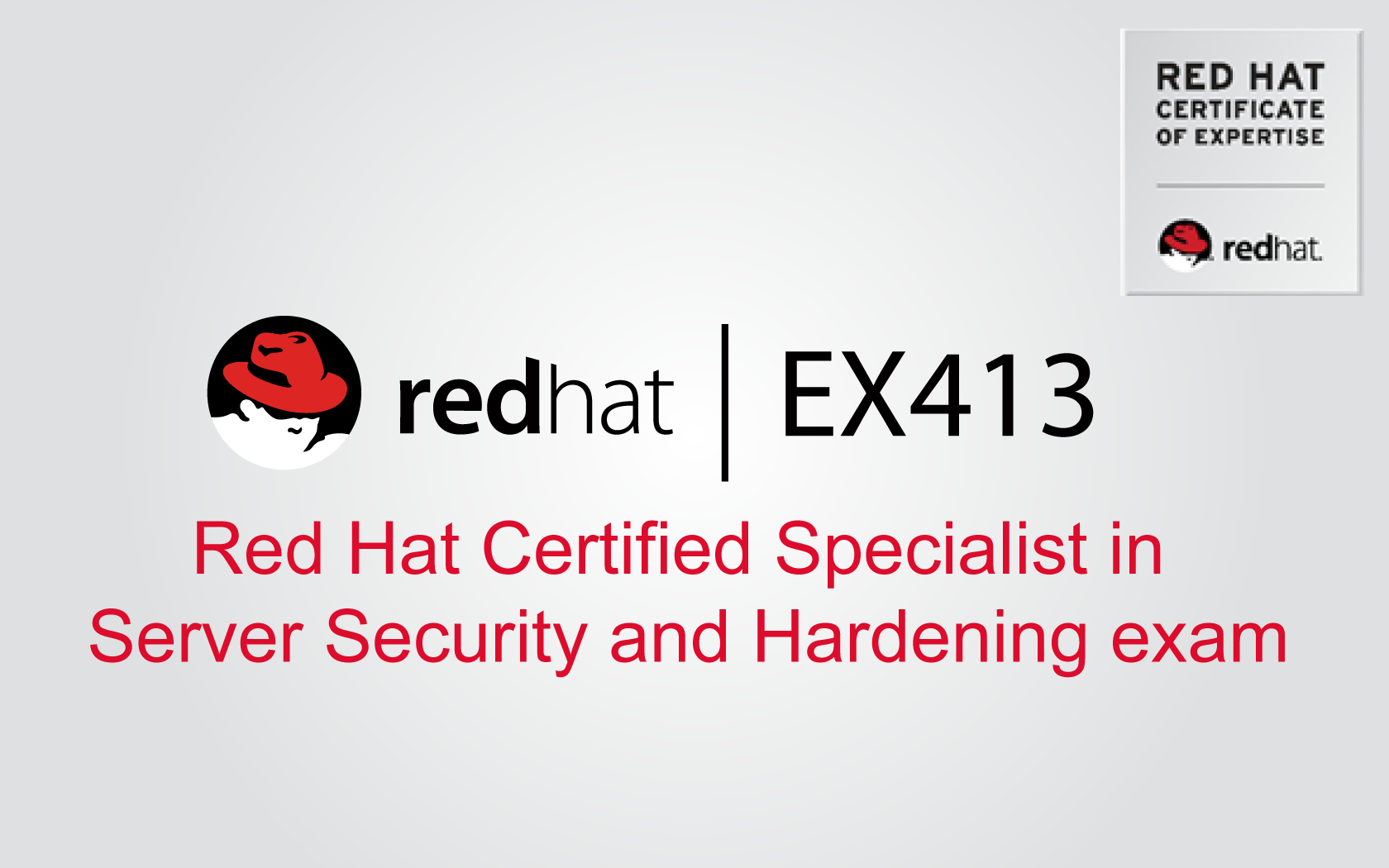- Home
- Infos Certification

EX413 - Red Hat Certified Specialist in Server Security and Hardening exam
The Red Hat Certified Specialist in Server Security and Hardening exam (EX413) tests candidates' knowledge, skills, and abilities to apply standards-based best practices to secure Red Hat®: Enterprise Linux®: systems against unauthorized access.
Duration: 4h
COURSE PROGRAM
The Red Hat Certified Specialist in Server Security and Hardening exam (EX413) tests candidates' knowledge, skills, and abilities to apply standards-based best practices to secure Red Hat®: Enterprise Linux®: systems against unauthorized access.
The following audiences may be interested in becoming a Red Hat Certified Specialist in Server Security and Hardening:
- System administrators responsible for standards-compliant security on Red Hat Enterprise Linux systems
- System administrators responsible for security on Red Hat Enterprise Linux systems or who wish to harden systems beyond default configurations
- RHCEs who wish to become a Red Hat Certified Architect (RHCA).
- Be Red Hat Certified System Administrators or have comparable work experience and skills (Red Hat Certified Engineer would be even better)
- Have taken the Red Hat Server Hardening (RH442) course or have equivalent work experience
- Review the Red Hat Certified Specialist in Server Security and Hardening exam (EX413) objectives
- Red Hat Server Hardening with exam (RH414)
- Red Hat Server Hardening (RH413)
To help you prepare, review the exam objectives which highlights the task areas you can expect to see covered in the exam. Red Hat reserves the right to add, modify, and remove exam objectives. Such changes will be made public in advance.
Candidates for the Red Hat Certified Specialist in Server Security and Hardening should be able to perform the following tasks:
- Identify Red Hat Common Vulnerabilities and Exposures (CVEs) and Red Hat Security Advisories (RHSAs) and selectively update systems based on this information
- Verify package security and validity
- Identify and employ standards-based practices for configuring file system security, create and use encrypted file systems, tune file system features, and use specific mount options to restrict access to file system volumes
- Configure default permissions for users and use special file permissions, attributes, and access control lists (ACLs) to control access to files
- Install and use intrusion detection capabilities in Red Hat Enterprise Linux to monitor critical system files
- Manage user account security and user password security
- Manage system login security using pluggable authentication modules (PAM)
- Configure console security by disabling features that allow systems to be rebooted or powered off using bootloader passwords
- Configure system-wide acceptable use notifications
- Install, configure, and manage identity management services and configure identity management clients
- Configure remote system logging services, configure system logging, and manage system log files using mechanisms such as log rotation and compression
- Configure system auditing services and review audit reports
- Use network scanning tools to identify open network service ports and configure and troubleshoot system firewalling
